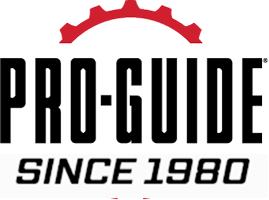At Pro-Guide Batteries, we craft and innovate top-tier lithium batteries tailored for RV, van, marine, residential, and off-grid applications. Dive into our FAQs below to discover more about what sets our products apart. Can’t find what you’re looking for? Our dedicated support team is eager to assist with any inquiries you may have. support@proguidebatteries.com
Lead Acid
The limiting factor of battery’s shelf life is the rate of self-discharge which itself is temperature dependent. VRLA batteries will self-discharge less than 3% per month at 77º F (25º C). Flooded batteries will self-discharge up to 15% per month at 77º F (25º C). VRLA batteries should not be stored for more than 6 months at 77º F (25º C) without recharged. The specific gravity or voltage of flooded batteries should be monitored every 4 – 6 weeks and should be given a boost charge when they are at 70% stat of charge (SOC). When batteries are taken out of long storage, it is recommended to recharge before use.
Series connection - A series connection is used to increase voltage, while keeping capacity at the same level. Two serial connected 12volt 100 AH batteries make a combined battery set of 24v 100 Ah. In a series connection, the positive terminal of one battery is connected to the negative terminal of the other, with the terminals that remain at the ends being connected to the system. Batteries with different capacities should never be linked in series
Parallel connection - A parallel connection is used when you need to increase your capacity. The positive leads are connected together, as are the negative leads. The cabling from the battery to the system should be: Positive from battery 1 and negative from battery 2 (or the last in the parallel connection).
The state of charge of a lead acid battery is most accurately determined by measuring the specific gravity of the electrolyte. This is done with a hydrometer. Battery voltage also indicates the level of charge when measured in an open circuit condition. This should be done with a voltmeter. For an accurate voltage reading, the battery should also be allowed to rest for a period of one hour minimum in order to let the voltage stabilize.
Pro-Guide Lithium
In some cases you absolutely can use your old charger. Pro-Guide Lithum is designed to be charged at 14.6 volts with a limitation of 15V max. In the event your charger exceeds that Voltage the BMS will trip and the charge profile will begin all over.
We do have charges that we recommend and approve. We offer the Noco Genius Line of chargers today because of their proved Lithium Charging Profile.
- NOCO Genius
- Power Pole Charge
- Minnkota Precision Series Onboard Chargers with Lithium Profile
Yes, unlike flooded Lead-Aid Pro-Guide Lithium LiFePO4 batteries do not contain any fluid so they can be mounted at any angle.
We recommend charging your batteries to 100% State of Charge and removing from all loads then stored at 14º F - 114º F
Unable to find the answers to your questions? Contact Us


 1-800-827-3232
1-800-827-3232